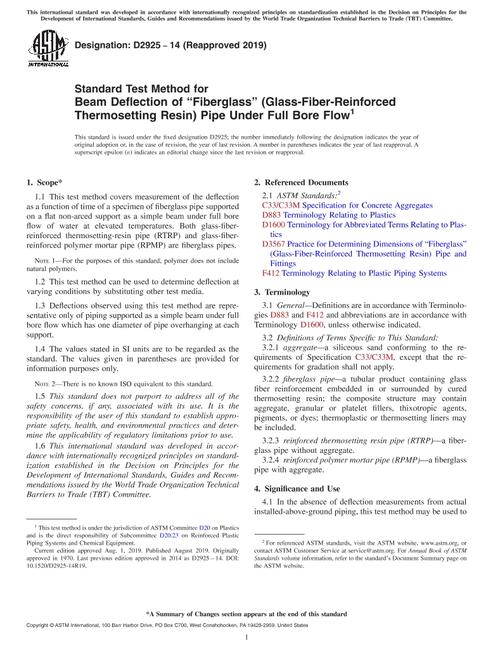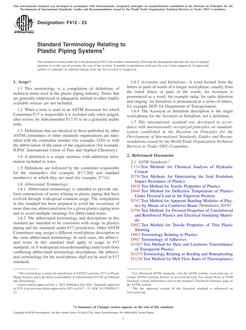-
-
Available Formats
- Availability
- Priced From ( in USD )
-
Available Formats
-
- Immediate download
- $48.00
- Add to Cart
-
- Printed Edition
- Ships in 1-2 business days
- $48.00
- Add to Cart
Customers Who Bought This Also Bought
-

ASTM F439-24
Priced From $63.00 -

ASTM F891-24
Priced From $63.00 -

ASTM D2925-14(2019)
Priced From $42.00 -

ASTM F412-23
Priced From $63.00
About This Item
Full Description
1.1 This practice describes a one-step (solvent cement only) method of joining pipe to fittings (and or piping components) that employ tapered sockets that provide an interference fit 1/3 to ²/3 's of the socket depth. This practice applies to poly(vinyl chloride) (PVC), or chlorinated poly(vinyl chloride) (CPVC).
1.2 This practice shall only be used with products (pipe, fitting, fitting component and solvent cement) where manufacturer's literature and local codes reference this ASTM standard practice: ASTM F3328.
Note 1: Where conflicts occur between the code and the manufacturer's installation instructions, the more restrictive provisions apply.
1.3 Due to inherent hazards associated with testing components and systems with compressed air or other compressed gases, some manufacturers do not allow pneumatic testing of their products. Consult with specific product/component manufacturers for their specific testing procedures prior to pneumatic testing.
Note 2: Pressurized (compressed) air or other compressed gases contain large amounts of stored energy which present serious safety hazards should a system fail for any reason.
1.4 Techniques covered are applicable to joining PVC to PVC, or CPVC to CPVC pipe and piping components with tapered sockets. In the remainder of this standard practice, the term “piping components with tapered sockets”, whether it be bell end pipe, spigot connections, or any other type of tapered connections, will be referred to as “fittings.”
1.5 Text of this practice references notes and footnotes that provide explanatory material. These notes and footnotes (excluding those in tables and figures) shall not be considered as requirements of the practice.
1.6 Units-The values stated in inch-pound units are to be regarded as standard. The values given in parentheses are mathematical conversions to SI units that are provided for information only and are not considered standard.
1.7 This standard does not purport to address all of the safety concerns, if any, associated with its use. It is the responsibility of the user of this standard to establish appropriate safety, health, and environmental practices and determine the applicability of regulatory limitations prior to use.
1.8 This international standard was developed in accordance with internationally recognized principles on standardization established in the Decision on Principles for the Development of International Standards, Guides and Recommendations issued by the World Trade Organization Technical Barriers to Trade (TBT) Committee.





